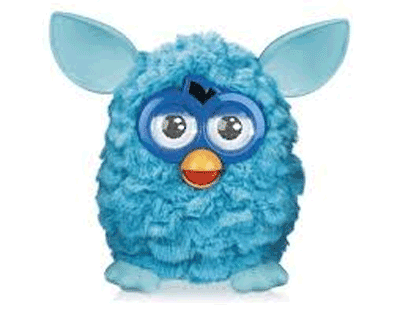The Furby is experiencing a resergence this year. The Hasbro electronic robotic toy resembling a hamster / owl-like creature first burst onto the toy scene in the holiday season of 1998, with continual sales until 2000. In 2005, new Furbies, Emoto-Tronic Furbies (Furby, Furby Baby, and Funky Furby), were released, with voice-recognition and more complex facial movements, and many other changes and improvements.

The magic behind Furby is the digital signal processor (DSP), a mathematical powerhouse of an integrated circuit that can handle the compute-intensive demands of a toy that changes its character before your eyes and ears, in real time.
Real-time signals
In November 2000, Gerald McGuire of Analog Devices described the digital signal processor in Electronic Products Magazine:
“Real-world signals are continuous functions of time. They must be sampled and converted to digital format by an A/D converter prior to numerical processing. The DSP performs discrete computations on individual samples or blocks of samples as they arrive.
“To maintain real time, the DSP must complete its algorithm in the time between samples or before the next block of samples is collected. For example, when processing audio sampled at 44.1 kHz, the DSP must complete its processing of a sample in under 22.67 µs, producing an output before the next sample arrives.
“In this case, a DSP operating at 100 MIPS has just over 2,200 instruction cycles to complete its processing. In these cycles, all of the computations, data moves, and I/O cycles must repeat for each sample block. To handle this repetition, well-designed DSPs incorporate hardware looping.
“Classified by the numeric data format (fixed or floating point) that they support, 16- and 32-bit DSPs are available over a wide range of price and performance. All but the most basic DSPs contain hardware multipliers, MACs, and ALUs that execute in a single instruction cycle.”
DSP chips are made by numerous companies, often for audio and video applications. If you’re interested in learning more about the companies that make them, here’s a complete list of DSP chip manufacturers.

Sensory’s speech-recognition microcontroller is in the center of Furby’s insides.
In the 2005 edition of the Furby, the RSC-4128 microcontroller from Sensory, a Santa Clara, CA-based chipmaker, provided the brains necessary for the resurgent toy’s many advanced new functions, which included complex motor controls (dancing, expressive eyes and moving ears), multiple sensors (tilt, tickling, petting and feeding), and advanced multilingual speech capabilities (talking and hearing). That all this is possible with one computer chip keeps the price of this amazing robotics affordable. The 2012 edition costs about $55.
Enjoy the following example of a Furby in action:
References
History of Furby
Sensory’s DSP
Sensory’s involvement with Furby
Background on DSPs from Electronic Products:
DSP architectures in real-time systems: Embedded systems often require the repetitive math capabilities of DSPs
■
Advertisement
Learn more about Electronic Products Magazine





